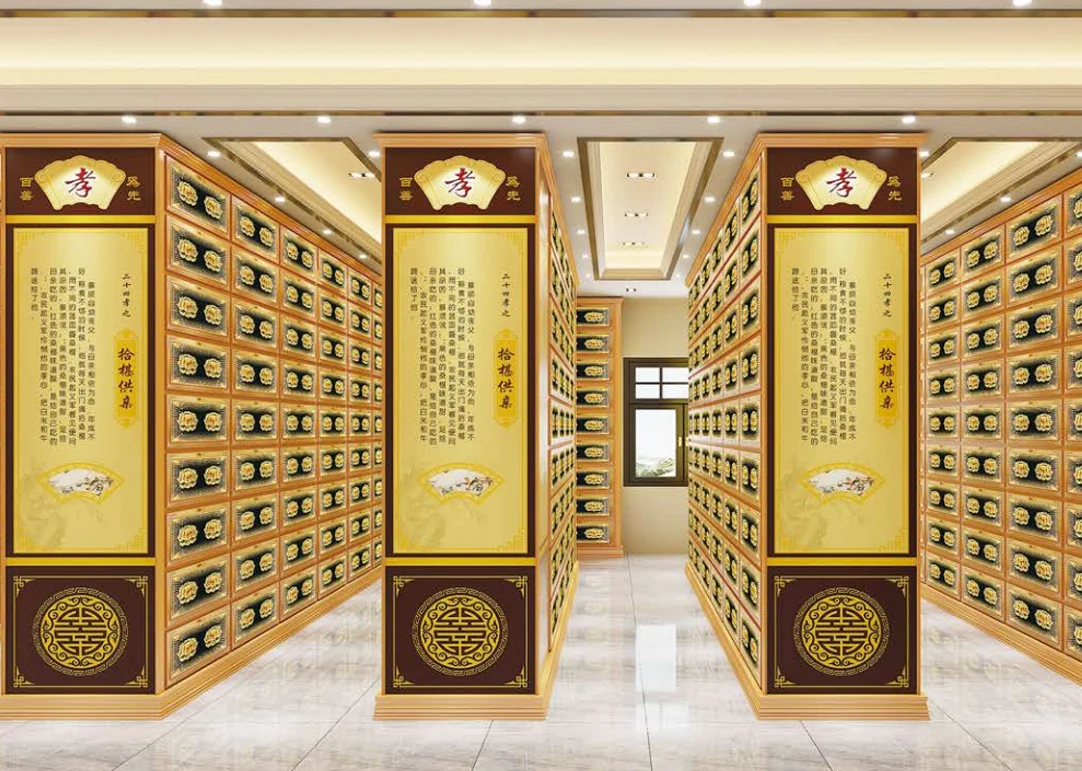Smart Urn Storage Rack's Intelligent Management Technology
2025-07-04
In recent years, technological advancements have revolutionized a wide array of industries, and the funeral and memorial sector is no exception. One of the emerging innovations in this field is the Smart Urn Storage Rack, which integrates intelligent management technologies to provide secure, efficient, and convenient storage solutions for urns. These systems are not only transforming how urns are stored and retrieved, but also enhancing the overall user experience for funeral homes, cemeteries, and memorial services.
1. Integration of IoT (Internet of Things)
A Smart Urn Storage Rack utilizes IoT technologies to create an interconnected and intelligent environment. By embedding smart sensors into the rack structure, the system is able to monitor and control various aspects of the storage process. These sensors track the temperature, humidity, and even potential tampering attempts, ensuring the urns are stored in optimal conditions and reducing the risk of damage or deterioration over time.
Through a central management platform, funeral service providers can remotely monitor the status of each urn, ensuring peace of mind for both the families of the deceased and the professionals involved in managing the urns. The IoT integration allows for real-time updates and alerts, making it possible to detect anomalies like temperature fluctuations or unauthorized access attempts, thereby maintaining high standards of care.
2. RFID and Barcode Technology for Easy Tracking
One of the most important features of a smart urn storage rack is the use of RFID (Radio Frequency Identification) or barcode technology for efficient tracking. Each urn is equipped with a unique RFID tag or barcode that contains relevant information such as the name of the deceased, date of placement, and storage location.
The RFID-enabled racks can automatically scan and log each urn’s entry and exit from the system. This ensures that the urn is always accounted for and can be easily located. In cases of large facilities where hundreds or thousands of urns might be stored, the RFID system can save significant time by eliminating the need for manual searches or manual logbooks. Moreover, the system can generate reports detailing urn retrievals, movement history, and other valuable data for both operational and legal purposes.

3. Cloud-Based Management and Data Analytics
A key advantage of integrating cloud-based management with a smart urn storage system is the ability to store data securely and access it from anywhere. Cloud computing enables funeral homes and cemeteries to manage storage across multiple locations without being confined to a single physical site. Data related to urn storage, retrieval times, environmental conditions, and even customer interactions are stored and analyzed in real-time on the cloud.
By leveraging data analytics, these systems can uncover patterns and insights that improve operational efficiency. For example, predictive analytics can be used to forecast peak storage periods, enabling better inventory management and reducing storage costs. Cloud access also ensures that the data is secure, backed up, and easily recoverable in case of system failures.
4. Automated Retrieval and Security Features
A smart urn storage rack also incorporates automated retrieval systems that use robotic arms or conveyor belts to retrieve urns at the touch of a button or via voice command. This technology makes it possible to quickly and efficiently locate and retrieve an urn, even in large storage units with numerous rows and sections.
Security is a significant concern in any storage facility, and the inclusion of biometric authentication systems (such as facial recognition or fingerprint scanners) ensures that only authorized personnel can access the urns. These security features provide an extra layer of protection, preventing unauthorized tampering and ensuring that urns are handled with the utmost care.
5. Enhancing the Customer Experience
For families of the deceased, the experience of retrieving an urn should be dignified, respectful, and seamless. Smart urn storage racks offer a level of customization and interaction that enhances the emotional experience for families. Many systems allow for digital memorials or photos to be associated with an urn, enabling loved ones to reflect on the life of the deceased while retrieving the urn.
Additionally, some systems are designed to integrate with mobile applications or touch-screen kiosks, providing customers with an intuitive interface for locating and retrieving urns. This is especially beneficial when families may not be familiar with the facility or the urn retrieval process. The ability to view storage location information, check on the status of the urn, and request retrieval services directly through an app or interface ensures that the process is user-friendly and comforting.
6. Environmental Considerations
Environmental sustainability is increasingly becoming a key factor in various industries, and the funeral sector is no exception. Smart urn storage racks can integrate eco-friendly practices such as energy-efficient lighting, low-power-consuming sensors, and systems designed to minimize the carbon footprint. Temperature and humidity regulation systems can be optimized for energy efficiency, ensuring that urns are stored in the right conditions without unnecessarily high energy consumption.
By adopting green technologies, smart urn storage solutions can align with broader environmental goals and reduce the overall environmental impact of the funeral and memorial industry.
Conclusion
The introduction of intelligent management technology in Smart Urn Storage Racks is a significant step forward in the funeral and memorial sector. Through the use of IoT, RFID, cloud-based management, automated retrieval, and enhanced security features, these systems offer a comprehensive solution that improves efficiency, security, and customer experience. As these technologies continue to evolve, we can expect even more advanced features and greater integration with other digital services, leading to a more seamless and respectful process for all involved.


